Thread on Equitas Small Finance Bank https://abs.twimg.com/emoji/v2/... draggable="false" alt="🧵" title="Thread" aria-label="Emoji: Thread">
https://abs.twimg.com/emoji/v2/... draggable="false" alt="🧵" title="Thread" aria-label="Emoji: Thread">
Market cap: 6061 crores
Revenues: 2645 crores
P/E: 24.9
P/B: 2.21
ROE: 9.75%
Here we go https://abs.twimg.com/emoji/v2/... draggable="false" alt="👇" title="Rückhand Zeigefinger nach unten" aria-label="Emoji: Rückhand Zeigefinger nach unten">
https://abs.twimg.com/emoji/v2/... draggable="false" alt="👇" title="Rückhand Zeigefinger nach unten" aria-label="Emoji: Rückhand Zeigefinger nach unten">
1/25
Market cap: 6061 crores
Revenues: 2645 crores
P/E: 24.9
P/B: 2.21
ROE: 9.75%
Here we go
1/25
EquitasB is five years old bank though has over 13 years of lending experience. Amongst all MFI-convert SFBs, the share of MFI at EquitasB is amongst the lowest and settled at around 20%;
2/25
2/25
Non-MFI businesses (~80% share) such as Small Business, Vehicle, etc. have a reasonably good vintage, already been fine-tuned, and have established their niche;
CV business (started in 2011) and Small Business loans (started in 2013) are likely to be key growth drivers.
3/25
CV business (started in 2011) and Small Business loans (started in 2013) are likely to be key growth drivers.
3/25
Bank has strong liability strategy, with focus on Mass affluent customers with Industry leading Savings rate (at 7.0%)
With a bouquet of services/offering (cross-sell) along with digital capabilities which ensure a smooth onboarding & rising customer loyalty & retention,
4/25
With a bouquet of services/offering (cross-sell) along with digital capabilities which ensure a smooth onboarding & rising customer loyalty & retention,
4/25
Strong 40% QoQ rise and 150% YoY rise in CASA very encouraging. Within SFBs, the bank has amongst highest share of secured loans.
Considering bank mainly serves the low-income group customer segment, it has seen elevated gross delinquency levels (at 4-6% in the last few years);
Considering bank mainly serves the low-income group customer segment, it has seen elevated gross delinquency levels (at 4-6% in the last few years);
Positively, strong focus on Secured products and Moving up the customer segment, the bank has contained net slippages (at 0.1-1.1%);
Equitas Holding Limited (EHL) is the promoter (owns 82%) of the bank and is a Non-operating financial holding company (NOFHC).
6/25
Equitas Holding Limited (EHL) is the promoter (owns 82%) of the bank and is a Non-operating financial holding company (NOFHC).
6/25
The transition from ~100% loans under moratorium to 6% reported stress (GNPAs + RSA) and ~4% in early delinquencies speak volumes about the bank’s customer selection and monitoring.
7/25
7/25
Amongst all MFI-convert SFBs, the share of MFI at EquitasB Is amongst lowest and settled at around 20%;
CV business (started in 2011) and Small Business Loans (started in 2013) are likely to be key growth drivers and considering the under penetration in both segments;
8/25
CV business (started in 2011) and Small Business Loans (started in 2013) are likely to be key growth drivers and considering the under penetration in both segments;
8/25
The bank has already scaled up retail deposits and the cost of funds has declined by 400-500 bps vs when it was NBFC;
The bank has focused on secured business loans (LAP) and Vehicle Financing (Used/New CV) as the growth drivers;
9/25
The bank has focused on secured business loans (LAP) and Vehicle Financing (Used/New CV) as the growth drivers;
9/25
EquitasB could be a potent competitor to LAP financiers or CV financiers NBFCs
Over the last 5 years (FY15-20), the MFI growth has been 11% CAGR as compared to 30% CAGR overall
The MFI share in the loan book has come down from 45% in FY17 & has stabilized at ~20% as of 3QFY21.
Over the last 5 years (FY15-20), the MFI growth has been 11% CAGR as compared to 30% CAGR overall
The MFI share in the loan book has come down from 45% in FY17 & has stabilized at ~20% as of 3QFY21.
Small Business Loans- Secured nature and low NPA; Key growth driver:
Small Business loans were started as secured loan products backed by property, As a cross-sell to existing MFI customers who have demonstrated a strong track record for 2-3 cycles;
11/25
Small Business loans were started as secured loan products backed by property, As a cross-sell to existing MFI customers who have demonstrated a strong track record for 2-3 cycles;
11/25
The Small Business loan is an umbrella term And houses several products, with a loan against the property being the underlying theme, the bank has also put affordable housing here;
Predominantly, the collateral is self-occupied residential property;
12/25
Predominantly, the collateral is self-occupied residential property;
12/25
Over the last few years, the bank has steadily moved up the ticket size and has penetrated more with an extended bouquet of products. The bank started with micro-LAP (ATS Rs 0.26 mn) and has also launched Business loans (ATS Rs 1.5 mn; highest limit Rs 10 mn);
13/25
13/25
SBL is likely to be the key growth driver for the bank.
Vehicle Finance- Fairly seasoned with deep expertise; Key growth driver:
The Vehicle finance business, started in 2011, has a reasonable vintage and has healthy customer loyalty and financials;
14/25
Vehicle Finance- Fairly seasoned with deep expertise; Key growth driver:
The Vehicle finance business, started in 2011, has a reasonable vintage and has healthy customer loyalty and financials;
14/25
Initially, it was restricted to Used Vehicle Financing & leveraged strong relationship & understanding of the driver cum owners segment;
With conversion to bank & ease in funding cost, the bank has also ventured into new CV financing which is 1/3rd of the vehicle finance book.
With conversion to bank & ease in funding cost, the bank has also ventured into new CV financing which is 1/3rd of the vehicle finance book.
The book is fairly granular with 2/3rd in Used and 1/3rd in new. The average ticket size at origination is Rs 0.4 mn while the average o/s is Rs 0.33mn.
Banks are not a large player in the Used CV space, which is dominated by NBFCs;
16/25
Banks are not a large player in the Used CV space, which is dominated by NBFCs;
16/25
Other segments: MSE / Corporate:
MSE- The bank stated MSE finance in 2013 as part of the small business loans segment
Target customer segment: self-employed entrepreneurs, primarily engaged in manufacturing & trading activities & has formal records of credit evaluation.
17/25
MSE- The bank stated MSE finance in 2013 as part of the small business loans segment
Target customer segment: self-employed entrepreneurs, primarily engaged in manufacturing & trading activities & has formal records of credit evaluation.
17/25
The bank offers both Working capital and term loans here, as of 3QFY21, the O/s book was Rs 9.9 bn (6% of loans);
Corporate: The corporate loans, launched in 2017, are mainly restricted to smaller NBFCs, a segment which the bank knows well;
18/25
Corporate: The corporate loans, launched in 2017, are mainly restricted to smaller NBFCs, a segment which the bank knows well;
18/25
Nearly 1/3rd of the exposure is towards MFI followed by AFC (~25%) and HFCs (23%) and the rest 17% to others;
70% of entities have a rating A or better while 15% are BBB and rest are Unrated;
The O/s portfolio was Rs 8.9 bn (5% of loans) as of 3QFY21.
19/25
70% of entities have a rating A or better while 15% are BBB and rest are Unrated;
The O/s portfolio was Rs 8.9 bn (5% of loans) as of 3QFY21.
19/25
These loans are repayable by monthly installments or interest modes scheme and have an average tenure of around 2 years;
Corporate loans share is ~5% and is likely to remain limited.
20/25
Corporate loans share is ~5% and is likely to remain limited.
20/25
Banks have very attractively SA products with amongst highest rate at 7% for balances above Rs 0.1 mn. The higher rates act as a hook & have other attractive offerings to retain and deepen the client engagement.
21/25
21/25
The gross slippages for the last 3 years ending FY20 were 3.5-6.0% range while net slippages (net of recovery and upgrade) were in the 0.1-1.1% range.
The blended PCR stands at 57%. However, it masks the strong PCR at Unsecured MFI loans. The PCR at MFI loans is 90%
22/25
The blended PCR stands at 57%. However, it masks the strong PCR at Unsecured MFI loans. The PCR at MFI loans is 90%
22/25
NIMs to moderate a bit but to remain amongst the highest:
As the bank transitioned from NBFC to SFB & shifted its focus from high-yielding microfinance to relatively low-yielding secured products, NIMs witnessed compression;
23/25
As the bank transitioned from NBFC to SFB & shifted its focus from high-yielding microfinance to relatively low-yielding secured products, NIMs witnessed compression;
23/25
Within 5 years, the bank has built a strong branch network of 850, within which 370 are pure liability branches. Incremental branch expansion is likely to remain calibrated at 15-20 branches for the next 2 years.
24/25
24/25
Capital levels have been strong with Tier 1 at 20.8% and overall CRAR at 21.6% (as of Q3FY21);
The capital position was supported by recent capital raise of Rs 2.8 bn (fresh issue) in the IPO in October 2020.
End of thread https://abs.twimg.com/emoji/v2/... draggable="false" alt="🧵" title="Thread" aria-label="Emoji: Thread">
https://abs.twimg.com/emoji/v2/... draggable="false" alt="🧵" title="Thread" aria-label="Emoji: Thread">
25/25
The capital position was supported by recent capital raise of Rs 2.8 bn (fresh issue) in the IPO in October 2020.
End of thread
25/25

 Read on Twitter
Read on Twitter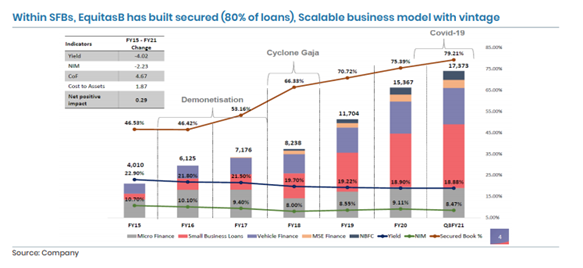
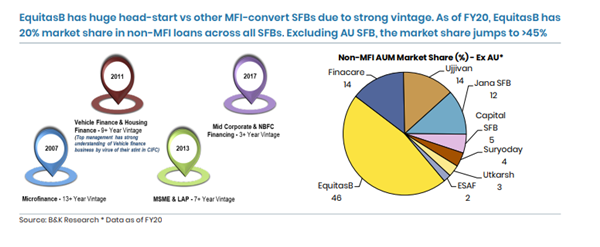

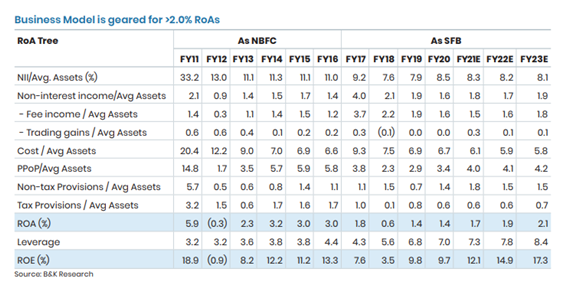
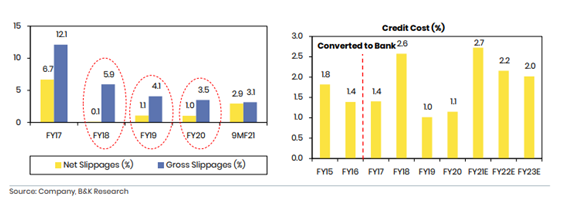
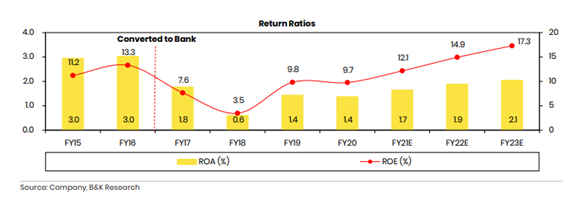
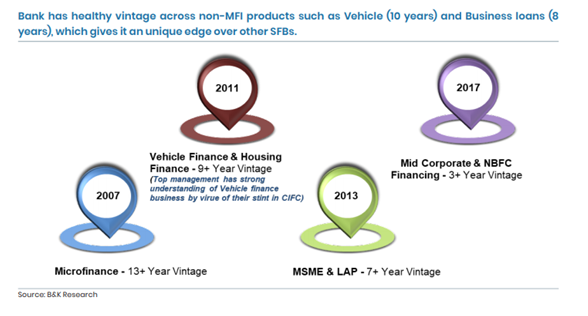
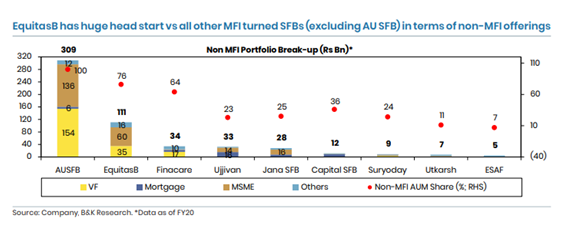
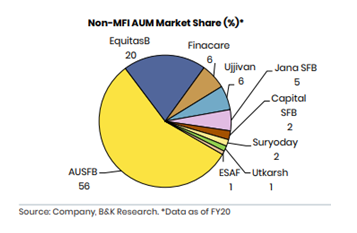
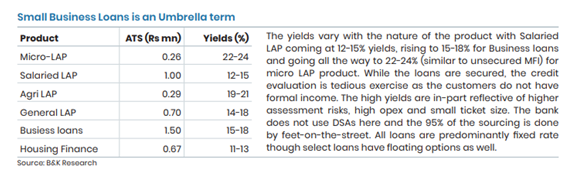
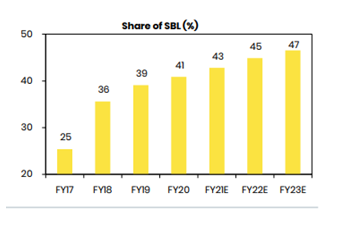
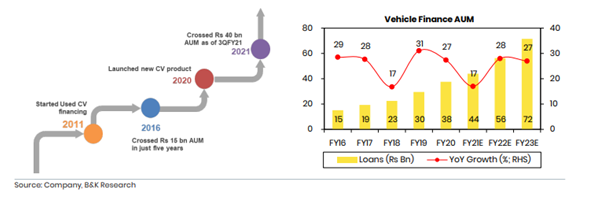
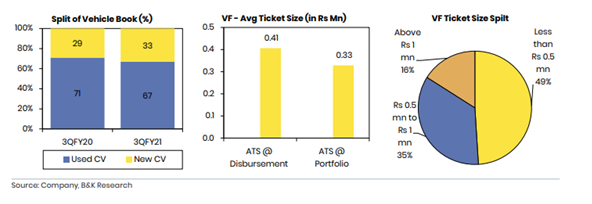
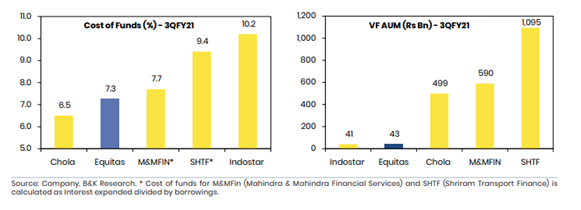
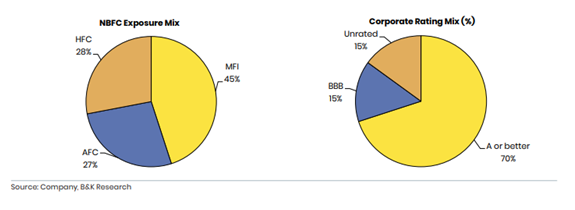
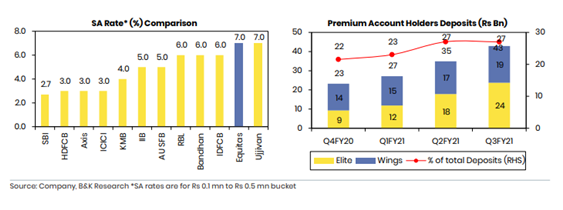
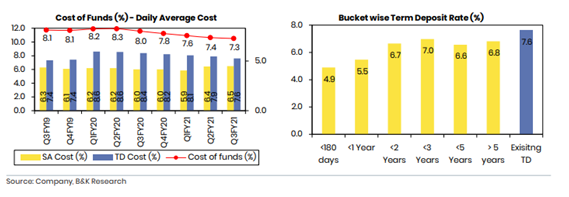
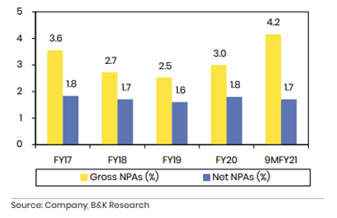
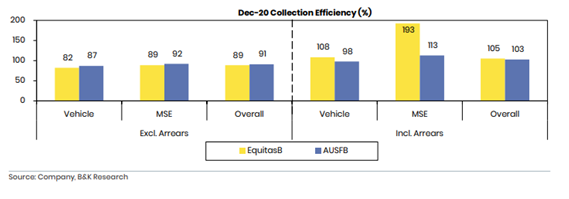
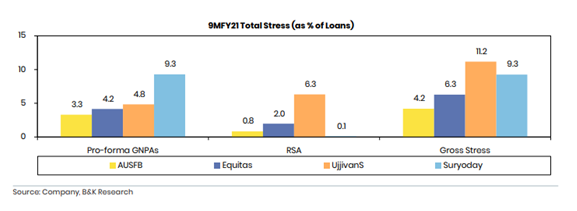
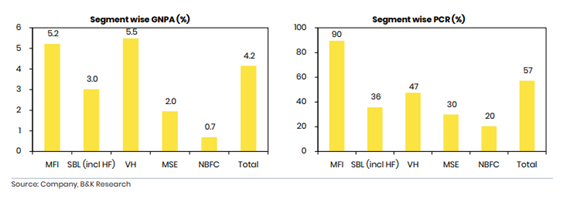
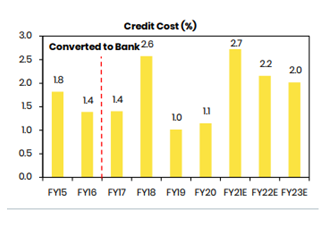
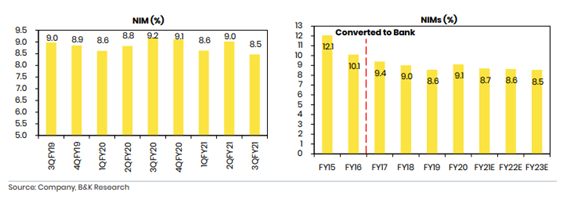
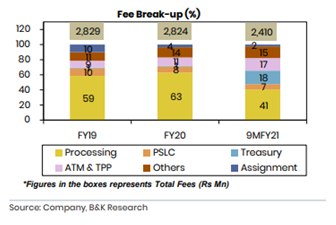
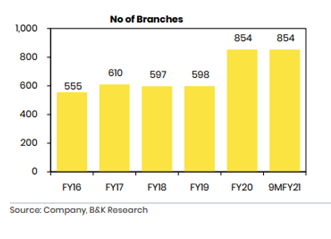
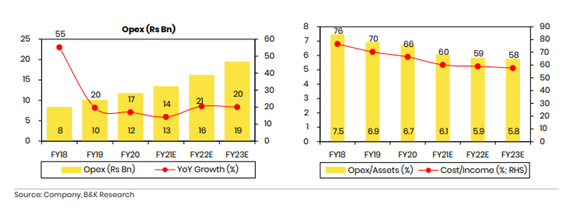
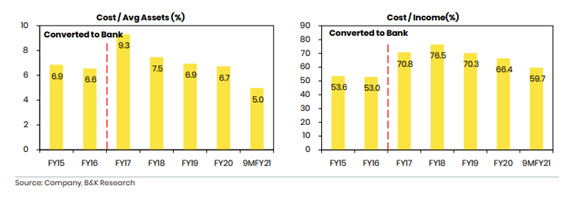 25/25" title="Capital levels have been strong with Tier 1 at 20.8% and overall CRAR at 21.6% (as of Q3FY21);The capital position was supported by recent capital raise of Rs 2.8 bn (fresh issue) in the IPO in October 2020.End of thread https://abs.twimg.com/emoji/v2/... draggable="false" alt="🧵" title="Thread" aria-label="Emoji: Thread">25/25">
25/25" title="Capital levels have been strong with Tier 1 at 20.8% and overall CRAR at 21.6% (as of Q3FY21);The capital position was supported by recent capital raise of Rs 2.8 bn (fresh issue) in the IPO in October 2020.End of thread https://abs.twimg.com/emoji/v2/... draggable="false" alt="🧵" title="Thread" aria-label="Emoji: Thread">25/25">
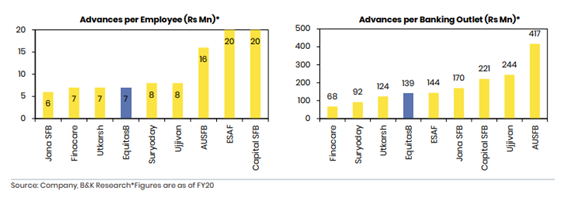 25/25" title="Capital levels have been strong with Tier 1 at 20.8% and overall CRAR at 21.6% (as of Q3FY21);The capital position was supported by recent capital raise of Rs 2.8 bn (fresh issue) in the IPO in October 2020.End of thread https://abs.twimg.com/emoji/v2/... draggable="false" alt="🧵" title="Thread" aria-label="Emoji: Thread">25/25">
25/25" title="Capital levels have been strong with Tier 1 at 20.8% and overall CRAR at 21.6% (as of Q3FY21);The capital position was supported by recent capital raise of Rs 2.8 bn (fresh issue) in the IPO in October 2020.End of thread https://abs.twimg.com/emoji/v2/... draggable="false" alt="🧵" title="Thread" aria-label="Emoji: Thread">25/25">
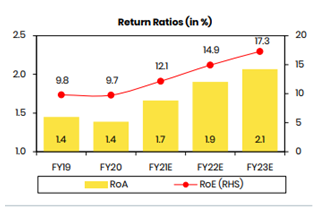 25/25" title="Capital levels have been strong with Tier 1 at 20.8% and overall CRAR at 21.6% (as of Q3FY21);The capital position was supported by recent capital raise of Rs 2.8 bn (fresh issue) in the IPO in October 2020.End of thread https://abs.twimg.com/emoji/v2/... draggable="false" alt="🧵" title="Thread" aria-label="Emoji: Thread">25/25">
25/25" title="Capital levels have been strong with Tier 1 at 20.8% and overall CRAR at 21.6% (as of Q3FY21);The capital position was supported by recent capital raise of Rs 2.8 bn (fresh issue) in the IPO in October 2020.End of thread https://abs.twimg.com/emoji/v2/... draggable="false" alt="🧵" title="Thread" aria-label="Emoji: Thread">25/25">


